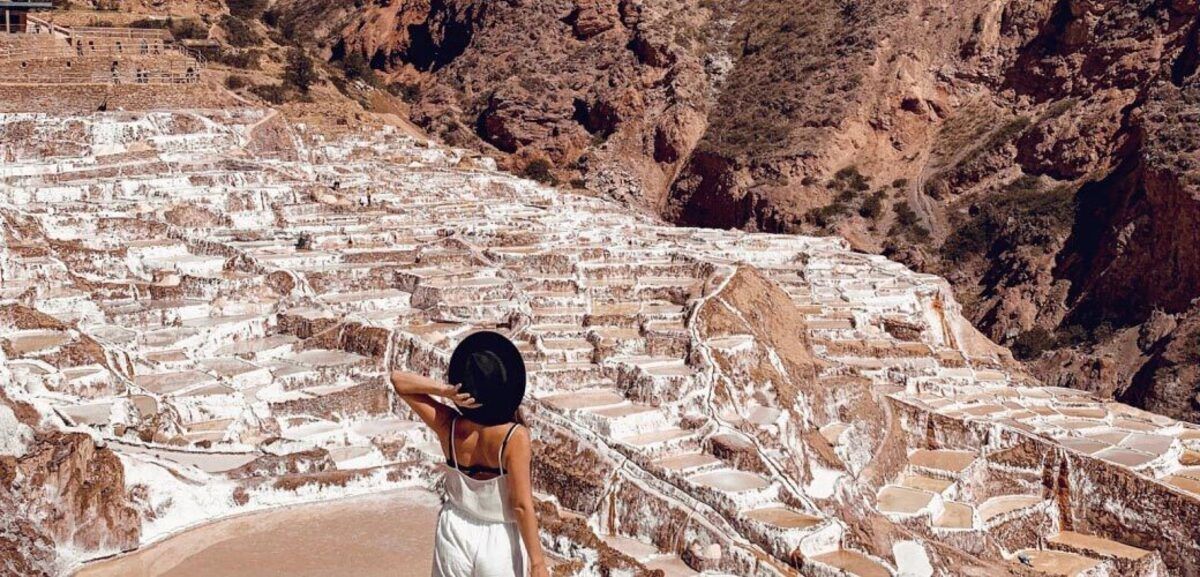Secrets Of The Salt Works: Hidden Historic Ponds

Have you ever wondered about the hidden history behind salt works? These ancient ponds, often overlooked, hold secrets of past civilizations. Imagine walking through a landscape where salt was once more valuable than gold. These ponds are not just bodies of water; they are living museums showcasing centuries-old techniques. From the Romans to medieval times, each era left its mark. Today, visiting these sites offers a unique glimpse into the past. You can see how salt was harvested, learn about its importance in trade, and even taste some of the finest salt produced. Ready to dive into this salty adventure?
Discover the Hidden Historic Ponds
Salt works have been around for centuries, playing a crucial role in the production of salt. These hidden historic ponds are not just about salt; they tell stories of ancient civilizations, trade routes, and unique ecosystems. Let's dive into some of the most fascinating salt ponds around the world.
1. Maras Salt Ponds, Peru
Nestled in the Sacred Valley of the Incas, the Maras Salt Ponds are a sight to behold. These terraced ponds have been used since pre-Incan times and are still operational today.
- Location: Sacred Valley, Peru
- History: Pre-Incan origins
- Unique Feature: Terraced ponds with a stunning backdrop of the Andes
2. Salinas de Janubio, Spain
Located on the island of Lanzarote, the Salinas de Janubio is one of the largest salt works in the Canary Islands. Its vibrant colors and unique shapes make it a must-visit.
- Location: Lanzarote, Canary Islands
- History: Established in the 19th century
- Unique Feature: Colorful salt pans and volcanic landscape
3. Trapani Salt Pans, Italy
The Trapani Salt Pans in Sicily are not only a historic site but also a nature reserve. These salt pans have been in use since the Phoenician times.
- Location: Sicily, Italy
- History: Phoenician origins
- Unique Feature: Windmills and birdwatching opportunities
4. Salar de Uyuni, Bolivia
Salar de Uyuni is the world's largest salt flat, stretching over 10,000 square kilometers. It's a breathtaking landscape that looks like a giant mirror during the rainy season.
- Location: Potosí, Bolivia
- History: Formed from prehistoric lakes
- Unique Feature: Mirror effect during the rainy season
5. Salinas Grandes, Argentina
Salinas Grandes is another vast salt flat located in the northwest of Argentina. It's a popular spot for tourists looking to experience its otherworldly landscape.
- Location: Jujuy and Salta, Argentina
- History: Ancient salt mining site
- Unique Feature: Expansive white salt flats
6. Lake Assal, Djibouti
Lake Assal is one of the saltiest bodies of water in the world. Located in the Afar Triangle, this lake is a geological wonder.
- Location: Afar Triangle, Djibouti
- History: Formed by volcanic activity
- Unique Feature: High salinity and unique geological formations
7. Pink Lake, Senegal
Lake Retba, also known as Pink Lake, is famous for its pink hue caused by algae. It's a unique natural phenomenon that attracts visitors from all over.
- Location: Cap Vert Peninsula, Senegal
- History: Used for salt production for centuries
- Unique Feature: Pink color due to Dunaliella salina algae
8. Bonneville Salt Flats, USA
The Bonneville Salt Flats in Utah are famous for land speed records. This vast, flat expanse of salt is a unique natural wonder.
- Location: Utah, USA
- History: Remnant of ancient Lake Bonneville
- Unique Feature: Ideal for land speed racing
9. Dead Sea, Israel/Jordan
The Dead Sea is one of the most famous salt bodies in the world. Its high salinity makes it impossible for most life forms to survive, hence the name.
- Location: Border of Israel and Jordan
- History: Known since ancient times
- Unique Feature: High buoyancy and therapeutic mud
10. Useless Loop, Australia
Useless Loop is a remote salt works located in Western Australia. Despite its name, it's a significant site for salt production.
- Location: Shark Bay, Western Australia
- History: Established in the 1960s
- Unique Feature: Pristine environment and rich marine life
Hidden Historic Ponds Await
Exploring the hidden historic ponds of the salt works offers a unique glimpse into the past. These ponds, rich in history, provide a serene escape from the hustle and bustle of modern life. Walking through these areas, you can almost hear the echoes of workers who once toiled here, harvesting salt. The natural beauty and historical significance make it a must-visit for anyone interested in history or nature. Whether you're a local or a tourist, these ponds offer a peaceful retreat and a chance to connect with a simpler time. So next time you're looking for a quiet spot to reflect, consider visiting these hidden gems. They’re not just ponds; they’re a living museum of our past.

